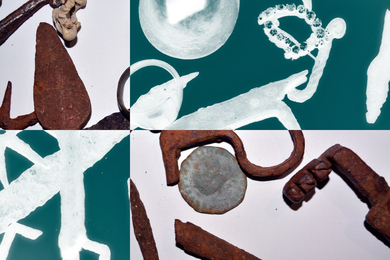MIT, a pioneer in linking education and research in science and engineering to marketplace applications, has launched an extensive review of its industrial linkages. The goal: to reengineer those linkages so that MIT can continue to prosper and serve well in a changing world.
President Charles M. Vest has appointed an 11-member MIT Task Force on Industrial Linkages to undertake the review.
The task force is chaired by Professor Merton C. Flemings, head of the Department of Materials Science and Engineering and Toyota Professor of Materials Processing.
MIT receives substantial research support from industry. In fiscal year 1993, industry provided 17.2 percent ($62 million) of the $361.4 million the Institute received for sponsored research. In addition, several leading US manufacturing firms play important roles in the Leaders for Manufacturing Program, and the MIT Industrial Liaison Program is a bridge that connects more than 300 diverse research-oriented industrial organizations with MIT faculty and staff.
Citing the evolving forces altering the role and nature of technology, science and the structure of industries, Dr. Vest encouraged the new task force "to think broadly and innovatively" about how to reshape MIT's connections with industry. He urged the task force to explore "radical and entrepreneurial new approaches" and to seek input "from both the private sector and the government" and from the MIT community.
The committee welcomes input from the MIT community and others by e-mail to
Dr. Vest urged members of the community to make their views known to the task force.
"In this effort, as in all of the efforts we are making to prepare the Institute for the future, hearing the views of the community is vital," Dr. Vest said.
Other task force members appointed by President Vest are Professors Suzanne Berger, political science; Edward F. Crawley, aeronautics and astronautics; Michael L. Dertouzos, director of the Laboratory for Computer Science; Marc A. Kastner, director of the Center for Materials Science and Engineering; Alexander M. Klibanov, chemistry; Thomas L. Magnanti, codirector of the Leaders for Manufacturing Program; Gregory J. McRae, chemical engineering; Fred Moavenzadeh, director of the Center for Construction Research and Education, and Paul R. Schimmel, biology. Thomas R. Moebus, director of the Industrial Liaison Program, is also a member.
Professor Flemings, an expert on the engineering fundamentals of materials processing and on innovation of materials processing operations, said in accepting the charge to the task force from President Vest:
"MIT's tradition of linkages to industry dates from its earliest days and was formed by the vision of our founder, William Barton Rogers. MIT has a strong tradition of applying its talents to society's problems through and with industry. I speak for myself and other members of the task force when I say that we are excited at the prospect of strengthening traditional links to industry and encouraging new forms of these vital interactions appropriate to our mission of education and research."
In his charge to the group, Dr. Vest said:
"The nature of engineering, the relationship between science and technology and the structure of industries are undergoing major transformations. As the leading institution of higher education focused primarily on science and engineering, MIT must both lead and respond to these transformations. This task force is asked to explore and recommend how MIT's relationship with and linkages to industry should be shaped in order for us to prosper and serve well in this emerging era."
Dr. Vest pointed out that the goals and environment for research and development in US industry are changing rapidly and profoundly and that industrial research laboratories have been radically transformed or eliminated.
"Our students, upon graduation, will move into restructured industries and embark on careers that may be quite different from those anticipated a decade ago. Opportunities are increasingly limited in basic research and in industries related to national defense. We can anticipate that many opportunities for our students in the foreseeable future will be in areas related to short- and medium-term competitiveness of larger companies or in smaller entrepreneurial companies.
"There is opportunity for MIT if the changing situation is analyzed carefully. Industry may need our basic research capabilities more than ever.
"Industry will be seeking students who are well grounded in fundamentals but whose aspirations are different than those of students in the past. If the need is clear, innovative educational endeavors may attract significant industrial support, as the Leaders for Manufacturing program has demonstrated.
"Partnerships, properly done, are mutually beneficial to industry and academia. We are a meeting ground for interaction among companies at the precompetitive and policy levels. Academic and corporate international ties might be mutually beneficial. We offer opportunities for multi-disciplinary research and education which are not easy to accomplish within most companies. We may have unexplored roles to play with small companies. Neither academia nor American industry have really come to grips with the opportunities for distance learning [learning at sites remote from the campus, such as the workplace] enhanced by modern information technology."
Among the questions the task force should address, Dr. Vest said in his charge, are these:
- What should be the basic MIT-industry relationship in an emerging era of globalized operation and competition?
- How can industry and academia work together to advance science and technology in a world dominated by civilian rather than military concerns?
- Are there new opportunities for industrial support of fundamental research at MIT?
- What should be the role of MIT in government-industry-university partnerships?
- How should MIT modify its educational programs to serve students and industry in coming years? What new opportunities exist for industrial support and interaction in our educational activities?
- Are the current structure, goals and policies of the Industrial Liaison Program and the Technology Licensing Office appropriate for the times? If not, what changes should be made?
A version of this article appeared in the December 8, 1993 issue of MIT Tech Talk (Volume 38, Number 17).





